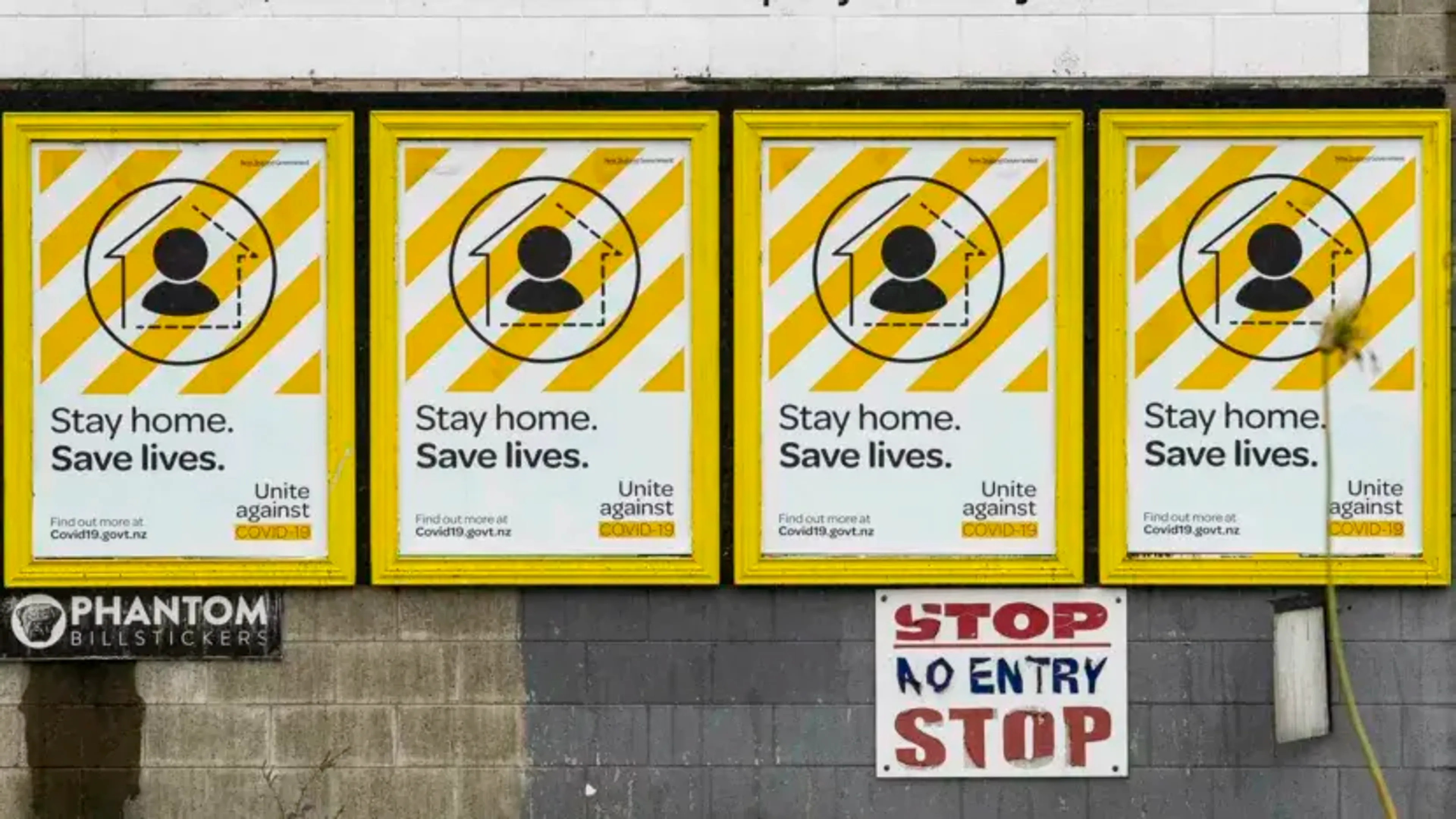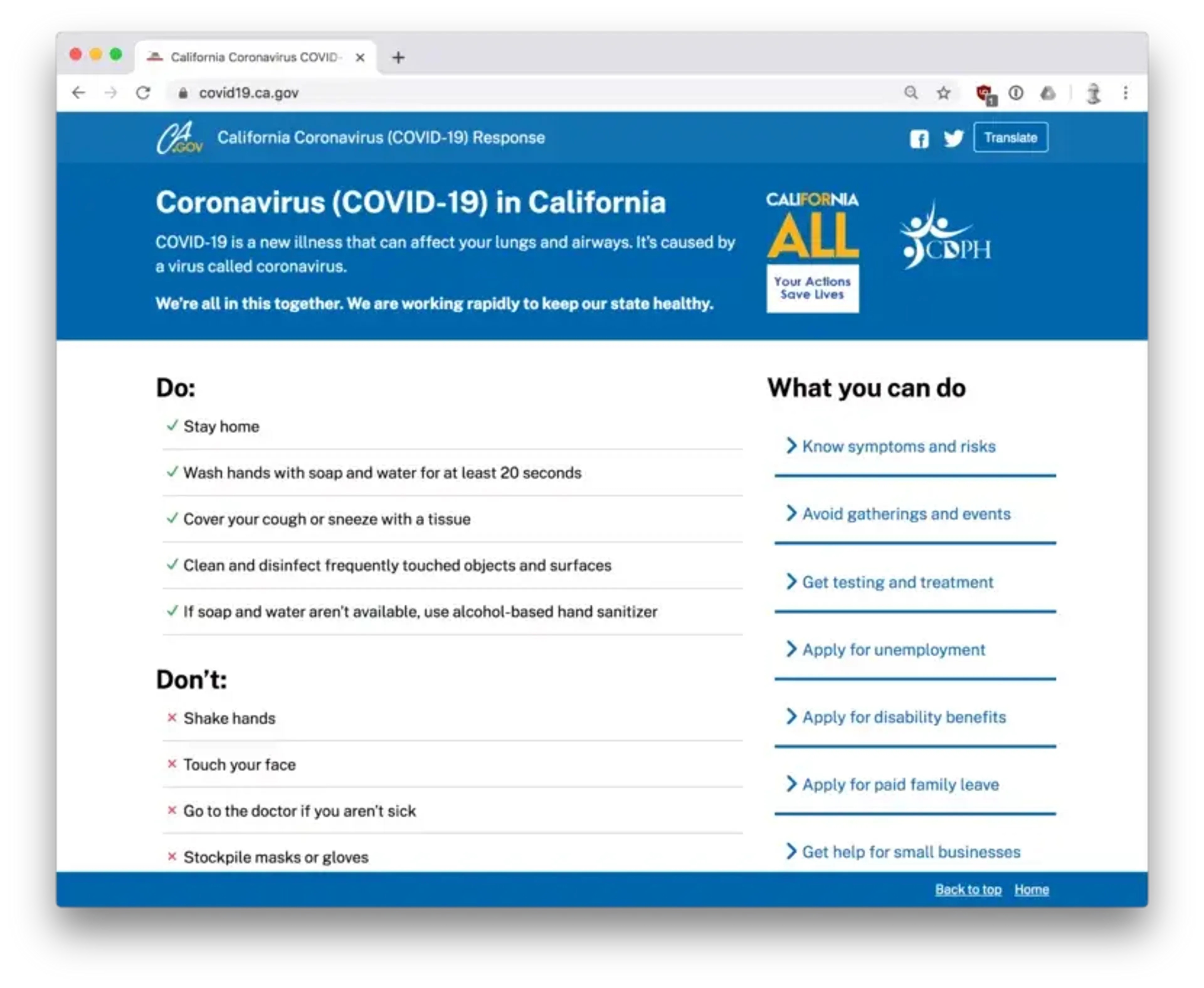
Ben Terrett CBE
CEO and Founder
We are in the middle of a pandemic. There are over 1 million confirmed cases of coronavirus across the world. People are suffering and many are dying. First and foremost, this is a public health emergency. My heart goes out to everyone affected by this crisis.
I have no desire to join the armchair medics, and this blog post is not about that.

As a leader my first duty is to look after the team at Public Digital. We decided to close the office early and we’ve done our best to make remote working healthy for everyone. In many ways, we were already set up for it. Over 80% of our work is done with people on the other end of a web connection, many miles away.
But this blog post isn’t about that.
This crisis is personal for me. My brother is a police officer and my sister-in-law is a surgeon. They are on the front line every day. My father died from cancer just before the lockdown and my brother was unable to make it over from the USA for the funeral. I FaceTimed the full service. Writing design fiction stranger than reality has become harder.
But this blog post isn’t about that either. This blog post is about change, and in particular, the changes organisations are having forced upon them to survive.
Ernest Hemingway wrote that change happens in two ways: “Gradually, then suddenly.” You see it in economic shocks, you see it in scientific progress. We have had a strong dose of sudden change. April 1st 2020 is a completely different, and more digital, world than March 1st 2020.
We used to call this change Digital Transformation. It was a useful phrase to describe an ambition, or a goal. But maybe that phrase has served its time. Because Digital Transformation isn’t an ambition any more. It’s much more important than that. And for me, that raises all sorts of questions.
Let’s start with the economy. In his excellent newsletter, Azeem Azhar described a discussion he had with the economist Nouriel Roubini. He asked, “Is this going to be a V-shaped recovery or is it going to be a U with a gradual recovery or is it going to be an L with stagnation or a W, a double dip?’ Roubini’s view was stark: “It is not a V. It is not a U. It is not an L. It is not a W. It is an I. A straight line down”.
One place you can see that letter I is in the US unemployment stats. There are now at least 6.6 million jobless Americans – nearly 20 times the average number. The economy hasn’t slowed down, it’s stopped. There’s no pattern library for this.
How do you move forward when history and experience are no guide?
The way we interact with each other has also fundamentally changed. Matt Webb writes eloquently about some of the changes we’re witnessing. Ever present streaming video is one. I’m willing to bet many grandparents were already comfortable with FaceTiming their grandchildren once a week, but they would never have FaceTimed their friends. You’ve been able to do yoga and pilates and HiiT classes on YouTube for 15 years, yet it’s taken this crisis for them to take off. The UK’s most famous horse race is being run as a computer simulation.
As restaurants close, food wholesalers in New York are setting up B2C websites as their B2B business has ceased. (Erika Adams, Tanay Warerkar and Serena Dai have compiled a list of 17 such wholesalers here.) Minimum viable products are mushrooming.

This is true of organisations big and small, public and private, global north and global south. Governments too. In Brazil they approved a tele-health law in two hours. In Peru it took a bit longer, all of two days. For those with a certain approach – the right culture, processes, business models & technologies – the speed of response has matched the speed of crisis. For those without it, well, I’m afraid you get pdfs to sign.
We suddenly have mass global adoption of digital, and by that I mean Tom’s definition of digital. ‘The way we do things around here’ no longer has purchase. Barriers to agility and experimentation – mental, cultural, legal and technical – are coming down. Mike has written about how if you want to make transformation stick, you need to be radical in changing how your organisation works, but incremental in changing what it delivers. Organisations are making decisions at a pace inconceivable just a few weeks ago, just to stay afloat.
Which will be the most important barriers to remove first? What will the consequences be?
These aren’t just professional concerns. For many people, the barrier between life and work has disappeared. As Rachel Sklar has written, homes are now offices and schools too. Term time – which defined childcare, holidays, and the working rhythm of millions – has suddenly evaporated. So too has domestic division of labour. Helen Lewis wrote in The Atlantic, “that despite the mass entry of women into the workforce during the 20th century, the phenomenon of the “second shift” still exists.” She continues to say, “A pandemic magnifies all existing inequalities”.
How will we make sure that as we up-end our working patterns, we seize this opportunity to leave behind a more equal and fair society?
It is striking that so far, the best responses to this faceless threat are from self-organising, diverse teams of people. When I say teams, I mean streets on WhatsApp, or adult social care groups linking with food delivery networks. They aren’t looking to steering committees. They aren’t reaching for pre-baked solutions. They’re getting on with meeting today’s needs, then tomorrow’s, then the next day’s.
In normal times, governments find rhythms of bureaucracy hard to give up. But they can also thrive under pressure. Many have. Digital government teams have had to move quickly with the first priority to publish accurate, clear and consistent information. With our help, the Californian Government has delivered a good ‘single source of the truth’, using the words real people use. The truth can be among the first casualties in a crisis. Rely on spin or jargon, and you pay for it with trust – the hardest currency we have at the moment.

Andrew, with Miguel Carrasco from our partners BCG, has written a list of what excellent digital government teams are doing right now. They are creating simple digital services that provide tailored information to concerned citizens and businesses in days. The screening service delivered by the Nova Scotia Digital Service is a good example, and as is this transit permit by Peru. Pete Herlihy writes about how they’ve made the GOV.UK Notify service available for all the public sector to use for emergency staff communications.
This is how the best digital teams have always worked, but organising this way, this fast, would have been a hard slog just a few weeks ago.
Will old ways of working return, if nothing else returns to normal?
I haven’t touched on data, though you should read Jeni Tennison asking, “Why isn’t the government publishing more data about coronavirus deaths?”. I haven’t covered privacy despite the obvious and urgent issues with tracking apps. This blog post could be many hundreds of words longer. More new questions will come up every day.
What is happening right now isn’t business as usual. But a lot of it will become business as usual. We are optimistic about that. We’ve been asking difficult questions for many years. We can advise you on how to reorganise and look forward. If you want us to help, then we are here. We’ve written more about how we can help here.
But if you can’t see through the noise and you just want to share your questions then drop me a line [email protected]
This post is part of a series on Coronavirus
Hearing from teams at the sharp end of governments’ coronavirus response by Tom Loosemore
Introducing the California crisis standard by Stacey Phillips
Government data: We’re all in beta now by Mike Bracken published on Sifted
What excellent digital government teams are doing right now by Andrew Greenway
Making things open is making things better by Tom Loosemore
Coronavirus: how Public Digital can help.

CEO and Founder